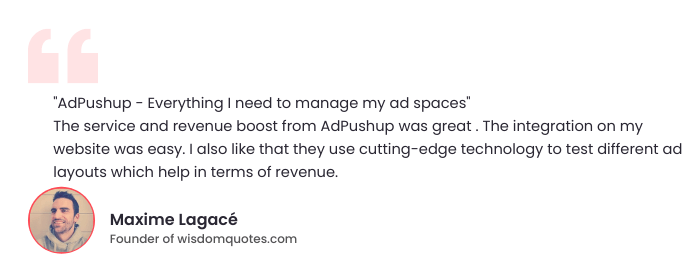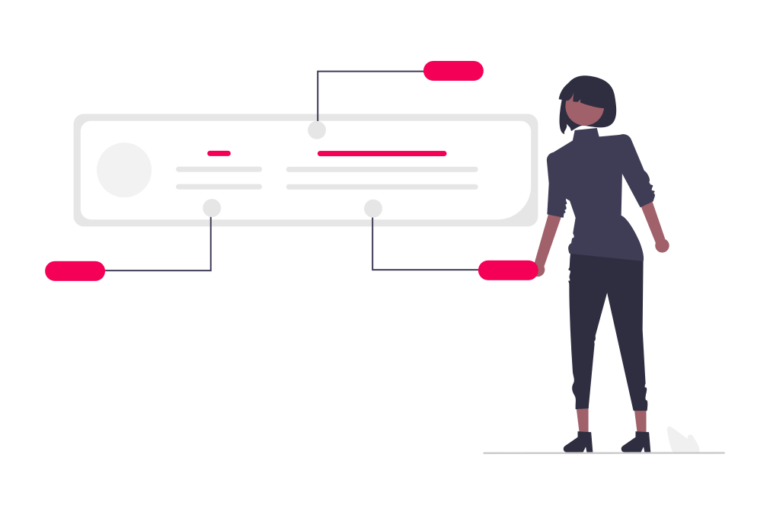If publishers want to stay competitive, they must prepare for the cookieless future. Here’s how to do it.
Following the deprecation of third-party cookies, a new wave of cookie-less identity (ID) solutions is sweeping the ad tech sector. Third-party cookies will soon be a thing of the past, as per Google’s plan to ban third-party cookies. In the face of mounting privacy concerns and regulatory scrutiny, Google is adamant about ending support for third-party cookies by the end of 2023.
According to a survey by Google, for the top 500 global publishers, average revenue among the respondents decreased by 52%, with a median per-publisher decline of 64% when third-party cookies were disabled.
However, according to a recent poll performed by ENGINE Media Exchange (EMX), 98% of publishers intend to use cookie-less solutions, yet only about half of them have taken the necessary steps in the right direction. As a result, the entire ad-tech business is preoccupied with devising solutions on the methods to keep afloat when the cookie will be deleted.
Publishers have been pushed to discover what the new basics of digital and video advertising, such as audience targeting and ad serving, will look like in the third-party cookie-less world.
Emerging challenges faced by publishers in extracting more value from digital advertising. In the last two years, publishers have been affected by the General Data Protection Regulation (GDPR) in Europe and the California Consumer Privacy Act (CCPA) in the United States.
For publishers, it means that they will have more control over the data they gather, ensuring that adequate consent is obtained and that the data is appropriately protected. If their work contains any personally identifiable information concerning EU residents, then they must seek the permission of the users. Residents of the EU will be able to withdraw their consent at any time, and the content will only be used for explicit, authorized purposes.
Publishers can craft new strategies to obtain first-party data, but they are reliant on the decisions of all browsers. The industry must develop new techniques to target, which is critical for advertising, in response to rising privacy data legislation.
Impact of a Cookieless World on the Publishers
Despite various assertions from the digital advertising ecosystem, it’s evident that no one-size-fits-all solution exists. To retain the same levels of ad effectiveness, different tactics will need to be thoroughly comprehended, tested, and brought into action. Publishers will need to stay on top of industry trends and put them to the test because if proper action is not taken then they may lose audience relationships and advanced targeting opportunities like:
- Publishers will be unable to use frequency capping on their advertisements which will result in consumers looking into the same adverts over and over again, possibly annoying them. They will be unable to construct an audience list to offer tailored adverts.
- Publishers will fail to target and retarget audiences throughout the Internet for both digital advertising and affiliate marketing efforts.
- Publishers will struggle to assess ad efficacy, particularly cross-device conversions and view-through rate.
The impact of removing third-party cookies will be seen across the entire advertising sector, since they have served various purposes, such as retargeting, conversion tracking, and so on for the past two decades. This has also aided publishers in identifying their users in order to improve the user experience.
Preparing for a Cookie-less Future
First-Party Data
The information that has been directly obtained from the audience through their activities, behaviours, and interests on the website is referred to as first-party data. It is important because it is a consented form of data in which the users have voluntarily provided the information.
It is extremely relevant to the business because it involves data collected directly from the website’s audience. It is privacy-compliant since the users are explicitly asked for their approval to share their data and are told how the data will be handled.
Ad interactions, page clicks, searches, forum posts, comments, and page information are just a few examples of first-party data that can be collected. Although a tough task, when combined with other similar forms of aggregate data can be utilized to generate a macro perspective of consumers.
Benefits of First-party data include having data that is consented to by the target audience, and the fact that it drives community engagement.

Identity Graph
An identity graph could be another response to the problem. The graph indicates a collection of data on consumers across several devices, including their interactions with physical stores. Identity graphs could be useful for distinguishing a specific user who has performed different actions in several situations with another random user. While using this graph, data is collected both online and offline, by creating a global ID that matches the profile of the users.
The graph depicts the users’ “lifetime value,” which is another new aspect of the GA4 (Google Analytics 4). If there is a publisher thinking about implementing an ID graph, they need to ensure that their vendor offers a persistent ID solution.
Identity graph benefits the publishers by having a better customer experience through personalized marketing tactics, and identity behavioral changes in real-time that allow publishers to be flexible while updating strategy to reflect the change in data.
Universal IDs
Universal ID is a growing solution for replacing cookies and saving user data. It is meant to be used instead of third-party cookies by publishers, advertisers, and ad technology providers. To generate a probable ID, most solutions either associate third-party cookies with a username, such as via email or fingerprinting.
A universal ID can function in one of two ways: either each user will have one number for a specified range of sites, or databases will be created to record different user IDs. The most important factor to consider when choosing a provider is data security, which must be ensured by publishers, marketers, and users.
Universal IDs are beneficial for publishers as it brings higher revenue potential due to authenticated client data that drives deterministic ad matching and omnichannel targeting, making it a one-stop-shop for publishers wishing to monetize their people across many channels.
Programmatic Header Bidding
Header bidding has gone from relative obscurity to an industry-standard programmatic advertising method in just a few years. According to eMarketer, in March 2019, 79.2% of the internet’s most popular 1,000 sites selling programmatic advertisements employed header bidding.
Before taking up their ad server, programmatic header bidding makes a publisher’s inventory available to several demand sources simultaneously. This cutting-edge technology enables operating direct programmatic auctions flexibly and authentically, highlighting the value of ad impressions and generating ad revenue.
Publishers who want to track and improve their ad monetization or eCPM (effective cost per mile), have long focused on header bidding. This metric looks at how much money an ad makes per 1000 ad impressions.
Benefits of Header Bidding includes Increased control where publishers get to choose the sources allowed to participate in the bidding process and transparency that helps publisher keep track of each impression’s ad transaction data.
Prebid Implementation
Prebid launched its own solution, known as SharedID, with the goal of putting publishers at the forefront of this significant shift in the digital advertising business. Many of the features that publishers will need in the cookie-free future are currently available in Prebid, and many more will be added or enhanced before the end of the year.
The Prebid system is unique because it is community-owned and is expected to increase openness among the parties involved, including publishers and DSPs. Another key aspect is that publishers can select whether to use the identification as first-party or third-party data value and whether or not to share it with bidders. Prebid comes with in-depth analytics publishers can use to gain invaluable insights into their ads’ performance to optimize their campaigns.
The Bottom Line
In the near future, different innovations and inventive techniques to dealing with the cookie-less issue are expected, and new solutions are now being created. To prepare for a cookie-free future, it will be required to strike the appropriate balance between ensuring privacy and security while also providing a personalized user experience.
It is important to examine the existing measurement setup and marketing budget and to realize that third-party cookie options will consume a significant portion of the budget in the months ahead. When used effectively, cookie-less data will not only protect the safety of the advertising business but will also respect user privacy.
FAQ
Collect First-Party Data Through A ‘Value Exchange’
Get To Work Providing Value To Remain Relevant.
Make It Attractive For Customers To Self-Identify.
Prioritize Consent When Collecting Consumer Data.
Create An Immediate Feedback System.
When we talk about a cookieless future, we’re talking about the end of third-party cookies. It is possible to build a web with cookies and Big Data in a transparent and secure way. But to do that, we need to reshape the way the internet and Digital Marketing have worked in recent years.

Shubham is a digital marketer with rich experience working in the advertisement technology industry. He has vast experience in the programmatic industry, driving business strategy and scaling functions including but not limited to growth and marketing, Operations, process optimization, and Sales.







